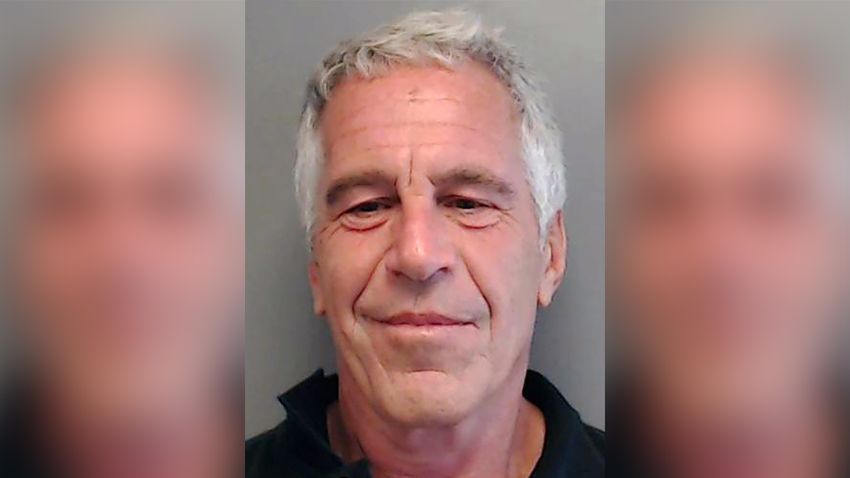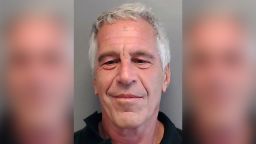Chief among the questions people are asking about Jeffrey Epstein’s apparent suicide while incarcerated is: Why wasn’t he on suicide watch?
The accused sex trafficker was put on suicide watch last month, after he was found in his Manhattan jail cell with marks on his neck, a law enforcement source and a source familiar with the incident told CNN at the time.
Less than a week later, psychologists with the Bureau of Prisons took him off suicide watch, a source familiar with the matter told CNN.
CNN reported Sunday that the jailed multimillionaire’s cell was not regularly monitored the night he is believed to have killed himself. The FBI and the Justice Department’s inspector general are investigating his death.
Nevertheless, Jack Donson, a former correctional treatment specialist for the federal Bureau of Prisons, told CNN’s Ana Cabrera on Saturday he didn’t see a “breach of protocol.”
“I don’t see the egregious issue here.”
Here’s what you should know about suicide watch in correctional facilities, and what it involves.
What suicide watch entails
Procedures for suicide prevention may vary across the thousands of federal, state and local prison systems, but there are some general principles, according to experts who spoke to CNN.
Correctional facilities are required to have a suicide prevention program, said Lisa Boesky, a psychologist and expert on suicide in jail. These typically include, but aren’t limited to, suicide screening and assessment, increased monitoring, restriction of potentially lethal items and having staff trained to intervene in a suicide attempt.
Lindsay M. Hayes, a project director for the National Center on Institutions and Alternatives and an expert in suicide prevention in correctional facilities, described two main levels of suicide watch.
The first, he said, is called constant observation, or 1:1, which means a staff member like a correctional officer is assigned to sit outside the inmate’s cell and provide “continuous, uninterrupted observation.”
But this method isn’t used in most cases, Hayes said. “It is very time- and staff-intensive, and it’s only used on the most acutely suicidal.”
Hayes referred to the more common level of observation as “close observation.” In most cases, inmates under this level of observation are checked on in 15-minute intervals.
“It’s best to stagger the walks,” he added. “So the first time you come around, it might 15 minutes, and the next time it’s 12 minutes, and ten minutes, seven minutes … so the inmate does not anticipate the round from happening.”
But what’s most notable about suicide watch are the privileges and possessions taken away from an inmate, Hayes said.
According to Boesky, inmates on suicide watch – or safety watch, as she calls it – should be kept in a suicide-resistant room. That means there’s no protrusions for the inmate to hang himself on, like a vent, sprinkler head, door knobs, bars on the door, towel racks, or bunk beds, for example.
Inmates are also given limited access to things they could potentially tie around their necks, Boesky said. “They’re given tear-resistant bedding, oftentimes no toilet paper, no towels, no extra clothing.”
Inmates can also be stripped of their clothes and forced to wear a safety smock, which Hayes described as a heavy, quilted garment that an inmate can’t use to hang himself. “If it’s made correctly it can’t be torn, it can’t be wrapped up into a ligature,” he said.
On suicide watch, inmates are also given finger food, Hayes added, and are given no utensils with their meals.
Throughout this period, the inmate should be regularly checked in on by a qualified mental health professional – like a psychologist or social worker – who will ultimately make the decision to take the inmate off suicide watch.
“Any time an inmate is on suicide watch, a qualified mental health professional should be checking in with them on a daily basis, providing support and to determine if the suicide risk is increasing, decreasing, or if they need to be removed from suicide precaution,” Boesky said.
How inmates are taken off suicide watch
There is no preferred timeline for suicide watch, or standard of care that requires someone be placed on it for a certain amount of time, Hayes told CNN. But being under this kind of watch is very restrictive.
“In some facilities, you cannot go anywhere, you have to wear special clothing, you have to eat specific foods, you are limited in your activity,” Boesky said, “and for many inmates it can make them even more dejected, despairing and hopeless.”
Given the conditions, “it would be completely unreasonable and inhumane to keep an inmate who appears to be stable on suicide watch indefinitely,” Hayes said.
“You just can’t do that.”
A clinician should decide to take an inmate off suicide watch based on a number of factors, Boesky said. “This should only be done when there is a face-to-face evaluation, and an evidence-based suicide assessment, taking into account the clinician’s observations, interviews with the inmate, conversations with correctional officers, as well as known stressors in the inmate’s current situation.”
In a high profile case like Epstein’s, Hayes said, a clinician may want to let a supervisor know they’re taking an inmate off suicide watch. But it ultimately comes down to their own clinical assessment.
Boesky said a clinician shouldn’t base their decision to remove an inmate from suicide precaution solely on the inmate’s own report of their suicide risk. Some inmates might misrepresent their level of suicide risk in order to escape the intense restrictions they’re under.
In some cases, Hayes said, “making it so restrictive isn’t making them less suicidal. It’s actually making them more suicidal.”
After suicide watch
Boesky stresses the importance of having “a continuum of levels of suicide- or safety watch.” Inmates on suicide watch, she said, should be “stepped down to lesser and lesser forms of intensive monitoring before being returned to general population.”
According to Hayes, what happens after an inmate is taken off suicide watch usually depends on the clinician’s assessment and the resources available. But it’s not unusual for an inmate to be put under another level of observation, and be checked on every 30 minutes by correctional officers. This “could be used as a final step toward getting them off all levels of observation.”
A 30-minute check should never be used, he added, on an inmate who a clinician still believes is suicidal.
An inmate who has been taken off suicide watch could also be placed in a cell with another inmate, though that can be complicated, because staff then have to find an inmate who is compatible.
Both Hayes and Boesky said correctional officers have a difficult job overseeing suicidal individuals.
And although everyone pays attention to this issue when it happens to a celebrity, suicides in jails happen every day, Boesky said.
“It is a tragedy that nobody talks about,” she said, “and much must be done.”





